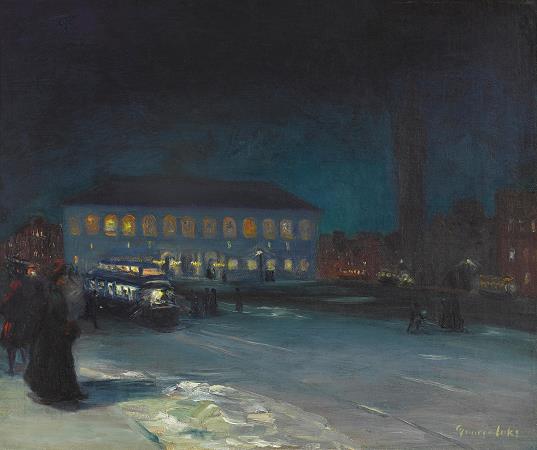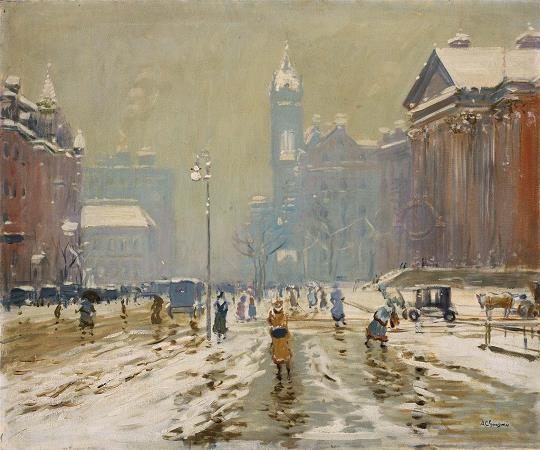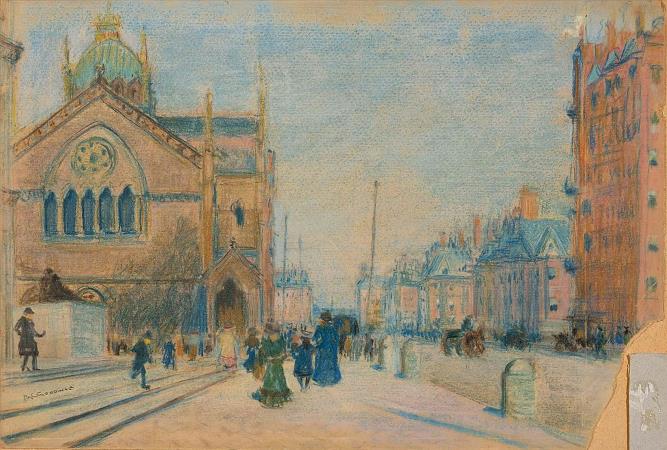Copley Square. Copley Square is a public square in Boston's Back Bay neighborhood, bounded by Boylston Street, Clarendon Street, St. James Avenue, and Dartmouth Street. It has been depicted in various art forms, most notably in paintings and photographs. Artists like Childe Hassam captured its architectural beauty and urban life in impressionist styles, while contemporary photographers highlight its dynamic public spaces and events. The square is often represented through its iconic landmarks, such as the Boston Public Library and Trinity Church, showcasing the blend of historical and modern elements. Public art installations and sculptures also contribute to its visual narrative, reflecting the square's role as a cultural and civic hub. The square is named for painter John Singleton Copley. Prior to 1883 it was known as Art Square due to its many cultural institutions, some of which remain today. Several architectural landmarks are adjacent to the square: Old South Church, by Charles Amos Cummings and Willard T. Sears in the Venetian Gothic Revival style. Trinity Church, considered H. H. Richardson's tour de force. Boston Public Library, by Charles Follen McKim in a revival of Italian Renaissance style, incorporates artworks by John Singer Sargent, Edwin Austin Abbey, Daniel Chester French, and others. The Fairmont Copley Plaza Hotel by Henry Janeway Hardenbergh in the Beaux-Arts style. The John Hancock Tower by Henry N. Cobb, at 790 feet New England's tallest building. The BosTix Kiosk, at the corner of Dartmouth and Boylston streets, by Graham Gund with inspiration from Parisian park pavilions. Notable buildings later demolished: Peace Jubilee Coliseum A temporary wooden structure, seating fifty thousand, was built on St. James Park for the 1869 National Peace Jubilee. Replaced by World's Peace Jubilee Coliseum, which was replaced by the Museum of Fine Arts. Second Church A Gothic Revival church by N. J. Bradlee. Chauncy Hall School, a tall-gabled High Victorian brick school building on Boylston St. near Dartmouth Street. Museum of Fine Arts by John Hubbard Sturgis and Charles Brigham in the Gothic Revival style, was the first purpose-built public art museum in the world. S.S. Pierce Building, by S. Edwin Tobey, no masterpiece of architecture, great urban design. A heap of dark Romanesque masonry, it anchored a corner of Copley Square as solidly as a mountain. Hotel Westminster, Trinity Place, by Henry E. Cregier; now replaced by the northeast corner of the new John Hancock Tower.
more...




